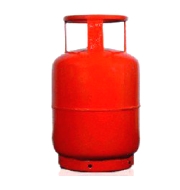Study Reveals High Refill Rates and Limited Access Prevent the Impoverished from Utilizing LPG
A study conducted by the United States Agency for International Development (USAID) and ASAR, an impact start-up, has highlighted significant barriers preventing low-income households in India from transitioning to cleaner cooking fuels like LPG. The study emphasizes that lack of access to LPG cylinders, limited awareness of government schemes, and the high cost of cylinders are major obstacles.
The research, titled “Barriers to Access, Adoption, and Sustained Use of Cleaner Fuels Among Low-Income Households,” underscores the importance of ease of access over ease of use for fuel choice. The study reveals that despite the health risks associated with biomass burning, women in these households are often unaware of cleaner alternatives due to financial constraints and misconceptions about LPG safety and quality.
What are the major challenges in transitioning to cleaner cooking fuels for low-income households in India?
Lack of access to LPG cylinders, limited awareness of government schemes, and the high cost of LPG cylinders are identified as major hurdles in the switch from polluting fuels like biomass to cleaner LPG.
Why is ease of access considered more crucial than ease of use in fuel choice?
The study highlights that for users, the availability and accessibility of clean cooking fuels are more significant factors in deciding fuel choice than ease of use.
How did the study conduct its research and what were its findings?
The study used focus groups and in-depth interviews in urban communities in Delhi and rural areas of Jharkhand, focusing on women above 18 years. The research found that lack of awareness about the health risks of biomass burning and financial constraints hinder the adoption of cleaner alternatives like LPG.
How does the Pradhan Mantri Ujjwala Yojana (PMUY) play a role in promoting clean cooking fuels?
PMUY, a flagship scheme by the Indian government, aims to promote clean cooking fuels, particularly LPG, among poor households. While it has expanded LPG access, the study indicates that sustained usage remains a challenge due to factors like high refill costs.
What financial constraints do low-income households face in using LPG?
The rising cost of LPG refills and the removal of government subsidies have made LPG cylinders unaffordable for many low-income households. This financial constraint often leads to a mix of using biomass along with LPG.
How could the findings of this study impact policies and programs in India?
The study’s insights could help shape policies and programs that address the specific needs of low-income households, especially women, promoting gender-inclusive and affordable access to cleaner cooking fuels.
Month: Current Affairs - August, 2023
Category: India Nation & States Current Affairs • Reports & Indexes Current Affairs








